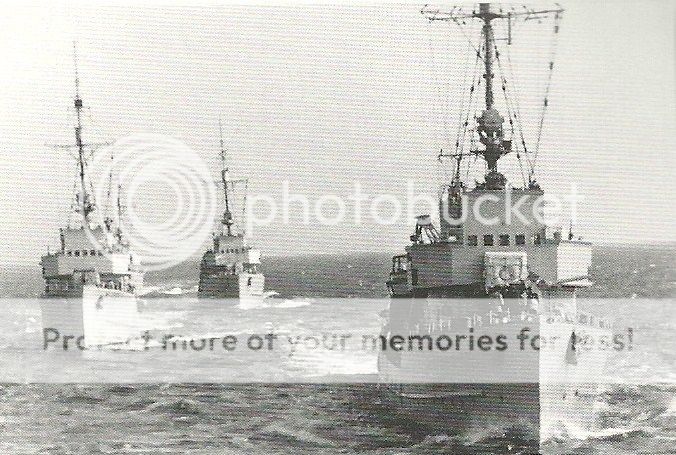The Prorer Wiek, Saturday, 16 March 1949
The latest of the Kriegsmarine’s amphibious exercises was in full progress, and though present, the escorting destroyers were not called upon for simulated naval gunfire support. The purpose of the exercise was to demonstrate the ability of the Kriegsmarine and its Russian allies to operate together in effecting a landing – even if unopposed, such operations were not to be taken for granted.
Aboard the landing ship Wettin a number of senior officers had taken over as much of the bridge space not absolutely required to navigate the ship itself. Vize-admiral Becker, under whose direction the Kriegsmarine had developed its doctrine and its amphibious shipping, was flanked by Konteradmiral Glaser, the senior officer responsible for operational training of fleet units in the Baltic. They had been joined by Captain First Rank Khrenov of the Russian Federation Navy, who, besides his official duties as naval attaché in Berlin was de facto commander of those Russian vessels participating in some capacity in Unternehmen Wachsame Entschlossenheit.
Becker turned his glasses shoreward, and watched with interest as the Russian landing ship Stepan Novikov finished disgorging her load of vehicles and equipment and began to raise her bow ramp and kedge away from the shore.
“Dybenko’s done his job smartly. For a ship and crew still working up the Novikov landed her contingent in less than an hour.”
“Thank you Admiral. I will convey your remarks to Captain Dybenko when we return to Warnemünde.”
The smaller German landing lighters continued to shuttle to-and-fro, while the larger landing ships Karpfen and Muräne made their way shoreward to take the place of the departing Novikov.
“Admiral, if I might be permitted a question.” Becker nodded and turned his attention to the Russian officer.
“The Kriegsmarine has developed a number of vessels to conduct amphibious warfare, most of which are smaller than the Novikov. Why disperse available resources over a larger number of small vessels rather than concentrate on a smaller number of ships with greater capability? The Kriegsmarine is presently building four different classes of landing ship, in addition to small craft.”
Becker smiled. “There is an old Bohemian proverb, ‘Legen Sie nicht alle Eier in einen Korb'- Do not put all your eggs in one basket. Have you studied our landings in the Moonsund archipelago during the Great War - Unternehmen Albion?”
Khrenov had to admit that he had not studied that aspect of the Great War in great detail.
“Your Baltic Fleet and coast artillery played havoc with our ships, even though few were sunk, but damage to the transports upset our plans and delayed execution of the operation for more than a week. Imagine if you will the impact that the loss of the Novikov might have on tactical flexibility or the ability to follow-up with subsequent landings? Employing more vessels of smaller size spreads the risk of loss and lessens the impact of damage.”
“Your point is well taken Admiral.”
“Besides, the different designs permit us to make best use of our shipbuilding resources – a ship the size of the Höllpass could never be constructed on the Danube, while the yards there can turn out many Nordstrands.”
Khrenov made no immediate rejoinder; he was well aware of the extent of Germany’s construction programme of amphibious vessels – eight small vessels – the Nordstrands – at Vienna. Eight slightly larger vessels were reported to be built at Memel. At dozen utility landing ships – similar to the Karpfen and Muräne – were due to be built as well as four vehicle landing ships of the Höllpass class, ships equivalent in size and capability to the Novikov. Thirty-two ships all told.

